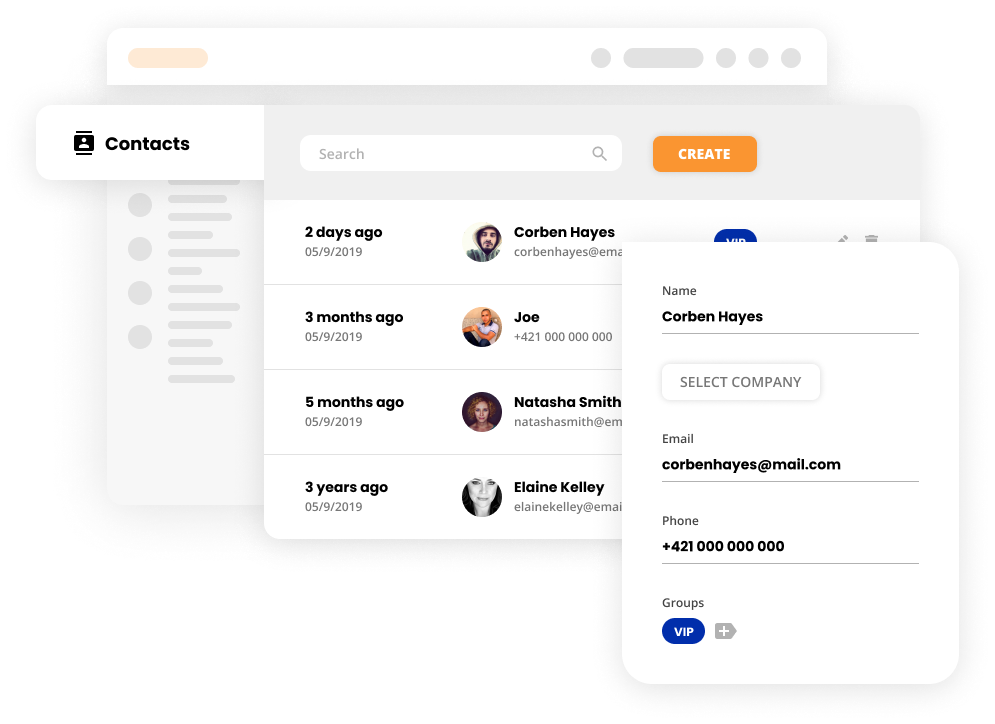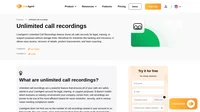What is warm calling?
It is one of the two types of calls — warm and cold calling. Warm calling is an expression professional sales representatives use to refer to talking with warm leads. The calling is labeled warm because the reps had earlier contact with the customers.
The goal is to keep the potential customer engaged with the product or service to increase the chances of conversion. As opposed to cold calling, where there is no prior contact with a customer you intend to contact.
Warm calling implies a previous contact and that the relationship has reached a stage when a rep can be more direct with a potential customer. The communication that precedes the warm calling can be a referral, an interaction at a business event, or a direct email campaign. Unlike other strategies which generate inbound leads, warm calling generates outbound leads.
It can have multiple forms, as it all depends on the business’s strategy and the circumstances of the previous touchpoints with the customers. In any case, all initiatives start with follow-up warm calls. The sales reps use this opportunity to schedule meetings with potential customers or discuss matters over the phone.
Warm calling implies that sales reps have access to contact data as well. Contact details are extremely important for warm calling; these details don’t only include a sales prospect’s email address and phone number. They also showcase past interactions with the customer and the history of purchases.

Remember that customers significantly outnumber the sales reps. This is why sales reps need all the help they can get ranging from platforms that centralize customer contact data to all-in-one help desk software with outbound calls support.
How does warm calling work?
For a warm calling strategy to work, you need to build a healthy foundation. Every successful warm calling initiative leverages the connections with a potential customer. To launch one of your own, you need to create a system that will help you establish a relationship and essential trust with your prospects.
Having previous contact with a potential client is the only way to turn an ordinary calling into an advantageous calling. There is already a level of trust and connection to leverage to get the lead more interested in purchasing a product or a service and ultimately convert more calls into sales.
There are many ways to start building that calling list. One of the most common strategies is to attend as many networking events as possible. These events create opportunities to connect with sales prospects. Given that there are both B2C and B2B events, businesses can choose to attend the events relevant to their specific goals.
Other strategies include building an email subscriber list and launching an email campaign. You can use indicators such as downloaded attachments to identify if prospects are ready to receive a warm call. Once you create a list of warm prospects, it’s time to make those calls.
The call is the final step of a warm calling strategy. A sales rep should call a warm customer with one purpose only — to set up an appointment. Remember, you should not prioritize making a sale during the phone call unless you are running a company where your reps sell exclusively over the phone. The primary goal is to set up an appointment where the actual sale will take place.
The phone call is there to enable your sales reps to assess the connection they have with the prospect and proceed accordingly. Since a prospect already trusts you and is intrigued to learn more about your product and service, converting them becomes more straightforward than business cold calling.
What to say when making a warm call
It’s important to note that your sales reps don’t have to improvise 100% of the time. A successful warm calling initiative is based on a warm calling script and practical warm calling tips. The script should cover various conversation scenarios ranging from conversations with an average buyer to conversations with C-level and VP buyers.
There are hundreds if not thousands of warm call scripts online based on different answer techniques and approaches. Since every business and its target customers are unique, it’s best to stick to a warm call script template. It would help if you used what you know about your customers, brand image, tone of voice, and general tips for successful warm calling. It will help you leverage connections with prospective buyers and maximize the conversion rates.
Here is a simple template to follow when contacting a warm prospective buyer:
- attention-grabbing opening — Say hello to prospects using their name.
- make proper introductions — Tell prospects your name and which company you represent.
- show your cards — Inform prospects why you are calling.
- talk about product/service — Use the information you have on prospects to make the product/service you are selling relevant to them.
You can build your warm call script based on two best practices: open-ended questions and active listening. Open-ended questions facilitate conversation while active listening improves mutual understanding and opens the door for a sales rep to ask an active question.
Remember that it is a warm call, not a sales call. Your sales reps are not going to pitch products or services. They will have conversations with sales prospects with a focus on prospects. The goal is to build a relationship on an already established trust and make the prospect take action. It’s normal to see many calls go off-script. It should not alarm the reps as they have the freedom to improvise when needed.
LiveAgent’s call center offers numerous options when it comes to features.
With the right features, call center software can help you improve customer service, satisfaction, and sales. Ready to find out more?
Frequently Asked Questions
What is warm calling?
It is a process of getting in touch with a potential customer, a sales rep, or a company you have already established a connection with. Once you have established a relationship with a sales prospect, warm calling is a strategy that significantly lowers the risk of rejection and can help increase conversion rates.
How warm calling works?
It's easy to understand how warm calling works once you know that at the center of every warm calling strategy are sales prospects that have previous experience with the company. Sales reps reach out to these prospects leveraging the trust and their interest in the products or services to capture a sale.
What do you say in a warm call?
While the sales reps can improvise during a warm call, it's better they do it only if a sales prospect goes off-script. This implies you should have a warm calling script and a list of warm calling tips before launching such an initiative. The rule of the thumb is to address a prospect saying their name and follow up with introducing yourself, the company you work for, and why you are calling.
After learning about warm calling, you might want to dive deeper into understanding its definition and use. Check out Warm Calling Explained: Definition & Use to get a comprehensive overview. If you're curious about the mechanics, the section on How does warm calling work? breaks it down in a simple way. For practical tips, the guide on What to say when making a warm call offers helpful advice. Plus, if you have any lingering questions, the Frequently Asked Questions section is a great resource. Lastly, if you're looking to elevate your customer service skills, don't miss the article on Want to improve your customer service?.
Effective outbound call center software
Boost sales with LiveAgent's CRM-integrated outbound call center software. Enjoy 24/7 support, no setup fees, and a 30-day free trial!

 Български
Български  Čeština
Čeština  Dansk
Dansk  Deutsch
Deutsch  Eesti
Eesti  Español
Español  Français
Français  Ελληνικα
Ελληνικα  Hrvatski
Hrvatski  Italiano
Italiano  Latviešu
Latviešu  Lietuviškai
Lietuviškai  Magyar
Magyar  Nederlands
Nederlands  Norsk bokmål
Norsk bokmål  Polski
Polski  Română
Română  Русский
Русский  Slovenčina
Slovenčina  Slovenščina
Slovenščina  简体中文
简体中文  Tagalog
Tagalog  Tiếng Việt
Tiếng Việt  العربية
العربية  Português
Português 







